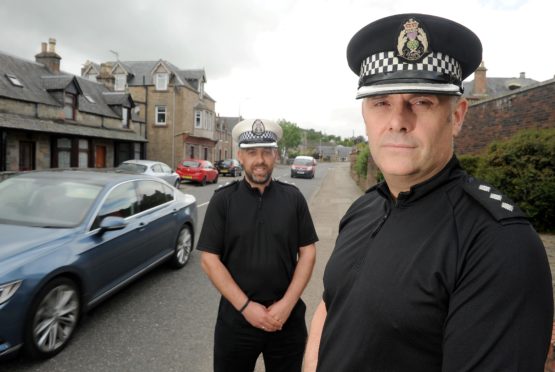A staggering 89% increase nationally in fatal accidents involving drivers aged 65 has put Highland traffic police on the look out for older drivers showing signs of being unfit to drive.
Based on observation, traffic patrols have been pulling over older drivers to check their eyesight on the spot.
They’ve also been observing older drivers for signs of dangerously slow reactions.
Road policing Inspector Neil Lumsden said: “What we’ve seen here over the past couple of years is an increase in incidents involving drivers 65 and over, although there are examples of younger drivers who have fitness to drive issues too.”
Nationally, the number of people killed in incidents involving drivers aged 65+ has shot up from 27 ten years ago to 51 last year.
Fitness to Drive is considered one of the ‘Fatal Five’ alongside drunk driving, failure to wear seat belts, speeding and distraction.
With almost 700,000 people aged 65+ holding a full driving licence, Fitness to Drive has become an important part of traffic patrols’ work, Inspector Lumsden said.
He said: “The main contributory factor when we drill down into these collisions is a failure to look properly, for example when pulling out of or into junctions.
“If we suspect there’s an issue with somebody’s eyesight, we have the power to carry out roadside eyesight tests involving reading a number plate from a distance of 20 metres.
“Just recently we stopped a driver on the A96 as we were unhappy with her standard of driving.
“We ran an eyesight test and she could only read the plate from just over 4 metres.”
Chief Inspector Iain MacLelland, North Highland command area, said he wants families to tackle the almost taboo subject of fitness to drive with their elderly relatives if they’re giving cause for concern with their driving.
He said: “We have examples in the Highlands of people who have been killed or seriously injured where an individual has had a recognised medical condition.
“The individual themselves knew, the family knew and the community knew.
“It’s not just that individual’s responsibility, but also- when do family members first have that conversation? How do they have that conversation, and likewise the community, with that individual about giving up driving?”
He advised concerned relatives or friends to broach the situation respectfully, to acknowledge the difficulty for individuals to give up driving and to give them time to accept the changes and the impact on their quality of life.
Mr MacLelland added: “This is not just about older drivers, it’s about drivers of all ages who are medically unfit to drive. It’s about everybody concerned recognising that, and doing something about it.
“None of us want it on our conscience. It’s the right thing to do and it does take courage.”
